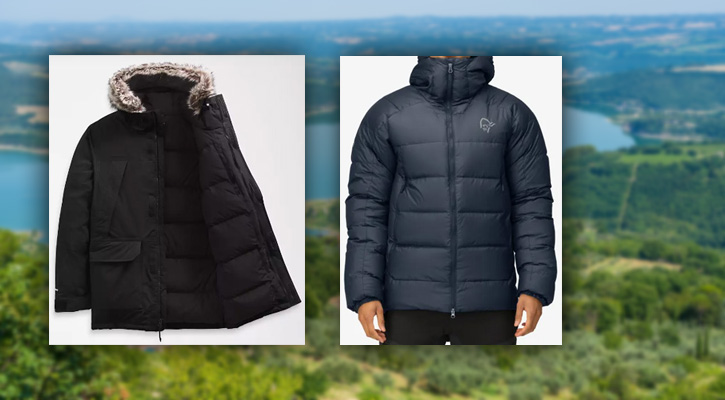
Gearing up for adventure? When it comes to rugged and reliable outdoor apparel and equipment, two popular names we always come across are Norrøna and The North Face.
Both brands have been popular among outdoor enthusiasts for decades. But which one is better for your next expedition?
In today’s article, we’ll compare these two outdoor gear giants across the categories that matter most: quality, materials, price, and style.
By the end, you’ll have the info you need to decide if Norrøna or The North Face is your best option!
Contents:
1. Norrøna Outdoor Gear
History of the Brand
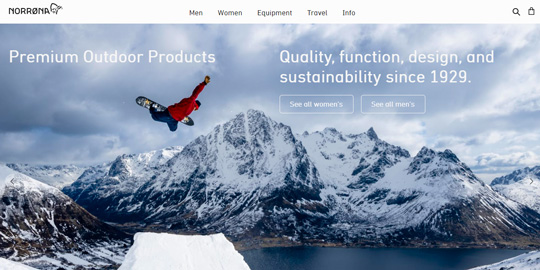
Norrøna official website
In 1929, Norwegian outdoor enthusiast Jørgen Jørgensen started his quest for resilient outdoor gear to withstand Norway‘s challenging conditions. This marked the genesis of Norrøna as he began crafting simple gear such as leather items, canvas packs, and cotton garments.
In 1948, Bjarne Jørgensen, the second generation Jørgensen, assumed leadership of the company. Over the subsequent decades, Norrøna broadened its product range and shifted its focus to technical functionality and mountain equipment.
In 1971, Ole Jørgen Jørgensen, the third generation Jørgensen, took the helm. Engineer Tomas Carlstrøm was enlisted to aid in the development of backpacks and mountain shelters. During the 1970s and 80s, Norrøna gained acclaim for pioneering products and supporting expeditions.
Notable achievements included the introduction of the first tunnel tent in 1972, Europe’s first Gore-Tex jacket in 1977, and the provision of gear for the first ascent of Trollveggen during winter in 1979.
Design became Norrøna’s third building block in 2000. Their Loaded Minimalism philosophy centers on uncluttered, practical design. The company embarked on international expansion in the mid-2000s, establishing new collections and outlets in Europe and North America.
Sustainability was integrated as Norrøna’s fourth pillar in 2015. The company is committed to transparency and allocates 1% of sales to environmental causes.
Today, four generations later, Norrøna endures as a family-owned enterprise based in Norway. Under the leadership of current manager Jørgen Jørgensen, the company persists in pioneering technical outdoor gear deeply rooted in Norwegian heritage.
Don’t miss:
9 Brands like Norrøna: Our Best Alternatives
Norrøna vs Fjällräven: Which is Better for Outdoor Gear?
Materials, Fabrics, and Production Process
Norrøna prioritizes the use of high-performance, environmentally friendly materials in their merchandise. They are pioneers in utilizing sustainable fabrics such as organic cotton, recycled polyester, and nylon, as well as down insulation that adheres to the Responsible Down Standard (RDS) guidelines.
Additionally, they employ Bluesign-approved fabrics and are dedicated to transparency. Norrøna is actively involved in initiatives like the Fashion for Good organization to advocate for sustainability. They have established the 1% for Nature program, through which they contribute 1% of annual sales to environmental causes and nature protection organizations.
The company strives for complete transparency in its sourcing and production processes, with sustainability being a fundamental principle of its business.
Norrøna designs technical products while emphasizing the use of eco-friendly materials and minimizing environmental impact. This dual commitment to performance and the environment is evident in their leadership in sustainable apparel.
Like other premium outdoor brands, Norrøna employs innovative fabric technologies and materials, including various versions of Gore-Tex membranes, Polartec performance fabrics, and PrimaLoft synthetic insulation.
The natural down utilized for insulation originates from the Pyrenees mountains in France, and the treatment of birds complies with European standards.
The video will be loaded from YouTube.com, a third party. If you play it, you accept their terms of service, and their use of cookies.
Read also:
Norrøna vs Arc’teryx Women’s Ski Jackets: Which Brand To Choose?
Norrøna vs Patagonia (Outdoor Gear Comparison)
Where is Norrøna outdoor gear made?
Norrøna’s outdoor gear is manufactured in various European and Asian facilities. Currently, the brand utilizes production sites in Lithuania, Spain, Portugal, Denmark, and Sweden in Europe, as well as in Vietnam, China, and Thailand in Asia. (source)
Recommended Products
Norrøna trollveggen down 850 Men’s Jacket
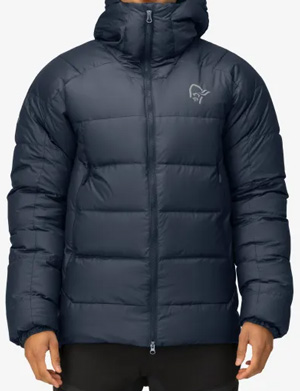
Image: norrona.com
Check it out at Norrona.com
The Norrøna trollveggen down 850 Men’s Jacket is a high-quality mountaineering down jacket constructed with aeroDownproof face fabric and packed with RDS-certified 850+ fill power down to offer exceptional insulation while remaining lightweight.
It incorporates windproof Pertex Quantum 30D 100% recycled polyester face fabric, 100g PrimaLoft Gold insulation in the pockets and on the shoulders, functional hand warming pockets, an insulated hood, and an extended back length for added protection.
Read also: 10 Norwegian Jackets and Clothing Brands that You’ll Love
Norrøna lyngen 40L Pack
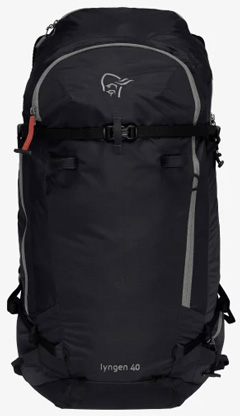
Image: norrona.com
Check it out at Norrona.com
The Norrøna Lyngen 40L Pack is a lightweight, robust backpack specifically crafted for ski touring, mountaineering, and trekking. Constructed from durable ECONYL® material using closed-loop regeneration processes, this pack is water-resistant and equipped with high-quality YKK zippers.
It boasts a highly ventilated back and includes compartments for avalanche equipment, crampons, and a rope. It’s also designed to comfortably carry ski and snowboard gear. The pack features compression straps, a hip belt with a pocket, ice ax attachments, and a chest strap. Additionally, the shoulder straps are made with a 3D design for breathability.
Read also: 3 Best Norwegian Backpack Brands: Our Top Picks
Prices
Norrøna makes long-lasting and comfortable outdoor equipment utilizing high-grade materials that endure demanding situations. Clients express a sense of being capable of excelling in the harshest environments due to Norrøna’s meticulous engineering.
However, all of this comes at a high price, with their jackets priced between $300 and $1,000, and their backpacks ranging from $100 to $700.
Are Norrøna products worth the price?
In our opinion, Norrøna’s outdoor jackets and gear offer excellent value for enthusiasts of advanced outdoor pursuits in search of durable products. The brand incorporates cutting-edge technology to offer only high quality, comfort, and warmth. Norrøna also offers distinctive designs and bold colors that you can’t easily find in other brands.
However, for those only engaging in casual outdoor activities, a more affordable brand might be a better option.
Learn more: Why is Norrøna so Expensive? Are Their Jackets Worth It?
2. The North Face Outdoor Gear
History of the Brand
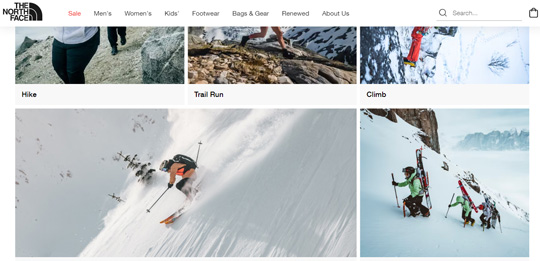
The North Face’s official website
The North Face stands out as a popular American brand within the outdoor gear industry, attracting a dedicated following since its establishment in 1966.
Initially recognized for its focus on crafting technical mountain gear such as hiking packs, tents, and skiwear, the brand’s appeal expanded beyond outdoor enthusiasts to encompass celebrity clientele in the 1990s.
The brand’s name originates from the most difficult to climb and frigid part of a mountain in the northern hemisphere, the mountain’s north face, symbolizing its commitment to enduring quality and performance.
Don’t miss:
11 Brands like The North Face: Our Top Alternatives
12 Best American Jackets and Outdoor Clothing Brands
Materials, Fabrics, and Production Process
The North Face utilizes predominantly Nylon and Polyester, like many other outdoor gear brands, and integrates multiple technologies into its products, including the FUTURELIGHT membrane. FUTURELIGHT incorporates a remarkably thin nanomembrane in jackets, enabling airflow while repelling water.
Extensive testing has demonstrated its ability to withstand even the most difficult outdoor conditions.
Additionally, The North Face employs goose down to provide thermal insulation, ensuring customers benefit from comfort and warmth during extended excursions. This lightweight insulation allows users the freedom of movement for various challenging activities.
Many of The North Face’s products use the renowned Gore-Tex technology, which provides waterproofing, windproofing, and breathability. Gore-Tex effectively allows moisture to escape while preventing water from entering.
The brand has also developed other technologies such as DryVent, WindWall, FlashDry, and the popular ThermoBall synthetic insulation.
The video will be loaded from YouTube.com, a third party. If you play it, you accept their terms of service, and their use of cookies.
Read also:
Haglöfs vs North Face: Which is Better?
The North Face vs Berghaus: Which is Better?
Where is The North Face outdoor gear made?
The majority of The North Face’s outdoor gear is manufactured in Asian countries like China, India, Bangladesh, and Vietnam, with some collections also being produced in the United States.
Recommended Products
The North Face Men’s McMurdo Parka
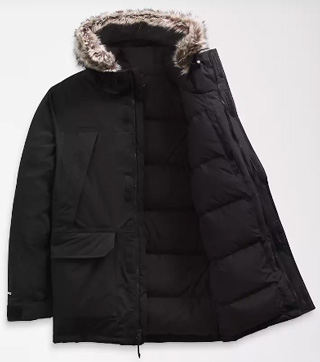
Image: thenorthface.com
Check it out at TheNorthFace.com
The North Face Men’s McMurdo Parka has been crafted to deliver outstanding warmth and shield from the wind and elements. This coat boasts a relaxed fit and is filled with 600-fill-power recycled down, making it an excellent option for cold conditions.
The parka is designed to be windproof, waterproof, and breathable, owing to its seam-sealed DryVent™ 2L shell with a non-PFC DWR finish. It is equipped with practical features such as concealed, secure-zip chest pockets, two dual-entry front patch pockets, and a secure-zip internal chest pocket.
The parka comes with an attached hood with an internal drawcord for adjustability and a detachable faux-fur ruff, along with a stormflap that covers the VISLON® front zip. Adjustable hook-and-loop cuff tabs ensure a secure and comfortable fit, making the McMurdo Parka a versatile choice for braving severe weather.
Read also: The North Face Diablo vs Himalayan: Which is Better?
The North Face Borealis Backpack
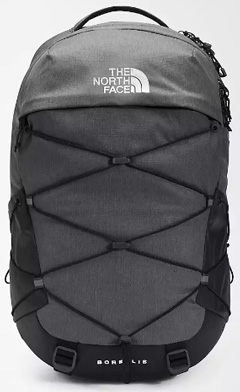
Image: thenorthface.com
Check it out at TheNorthFace.com
The Borealis Backpack stands out as a popular and adaptable pack engineered to deliver both safety and utility for your day-to-day requirements. Its distinctive bungee cord system and spacious interior compartment ensure the security of your belongings.
This backpack’s upright design, detachable waist belt, chest strap, and safeguarded laptop section make it suitable for diverse pursuits and settings. For organization, the Borealis features an external bungee-compression system, side bungee cords for compression, and bottom compression.
Crafted from a combination of recycled nylon and recycled polyester, this backpack not only offers functionality but also aligns with sustainable principles. With its combination of pragmatic features and considerate design, the Borealis is an adaptable option for everyday use in your city.
Read also: How To Wash a North Face Backpack: Step by Step
Prices
The pricing of The North Face’s gear tends to be higher compared to numerous other outdoor companies. Typically, the brand falls within the mid-to-upper price range. For instance, their jackets are priced between around $70 and $800, while their backpacks range from $50 to around $300.
Are The North Face products worth the price?
If you are an avid mountain hiker, skier, or outdoor enthusiast, we think The North Face gear justifies its cost. Their equipment is crafted to deliver the comfort, utility, and effectiveness you need.
For casual everyday gear, it depends. But, generally, you can find a few affordably priced items at The North Face, making it a good option even in this scenario.
Learn more: Why Is The North Face So Expensive and Popular? Are Its Jackets Worth It?
3. Which is Better? Norrøna or The North Face?
Both are among the best options you have for outdoor equipment. Here are our considerations to help you decide which one to choose:
The Norwegian Norrøna, founded in 1929, specializes in technical mountain sports apparel and gear. Their products are designed for serious climbers and mountaineers.
The American The North Face, founded in 1966, makes outdoor apparel, footwear, and gear for a wide range of activities like hiking, climbing, skiing, etc. Their products range from high-end technical gear to more casual and lifestyle apparel.
Norrøna is usually regarded as a more technical and performance-oriented brand focused on advanced users. Their products are often lighter weight and made with high-end materials.
The North Face has wider brand recognition and popularity. Their products range from high-performance gear to more accessible styles for the average consumer.
Norrøna gear is more expensive given the premium materials and construction. The North Face has a wider range of prices.
Both make high-quality products, use advanced technologies (Gore-Tex, PrimaLoft, Thermoball, DryVent), and focus on sustainability. Norrøna focuses more on cutting-edge technology and materials for serious mountaineering. The North Face has a broader appeal for the mass outdoor market.
In the end, Norrøna is a more niche, technical brand while The North Face is more well-known and versatile. For extreme alpine climbers, we’d choose Norrøna, while for the average hiker or skier, The North Face provides great quality and value.
You’ll also like: 10 Best Expensive and Luxury Winter Jacket Brands
